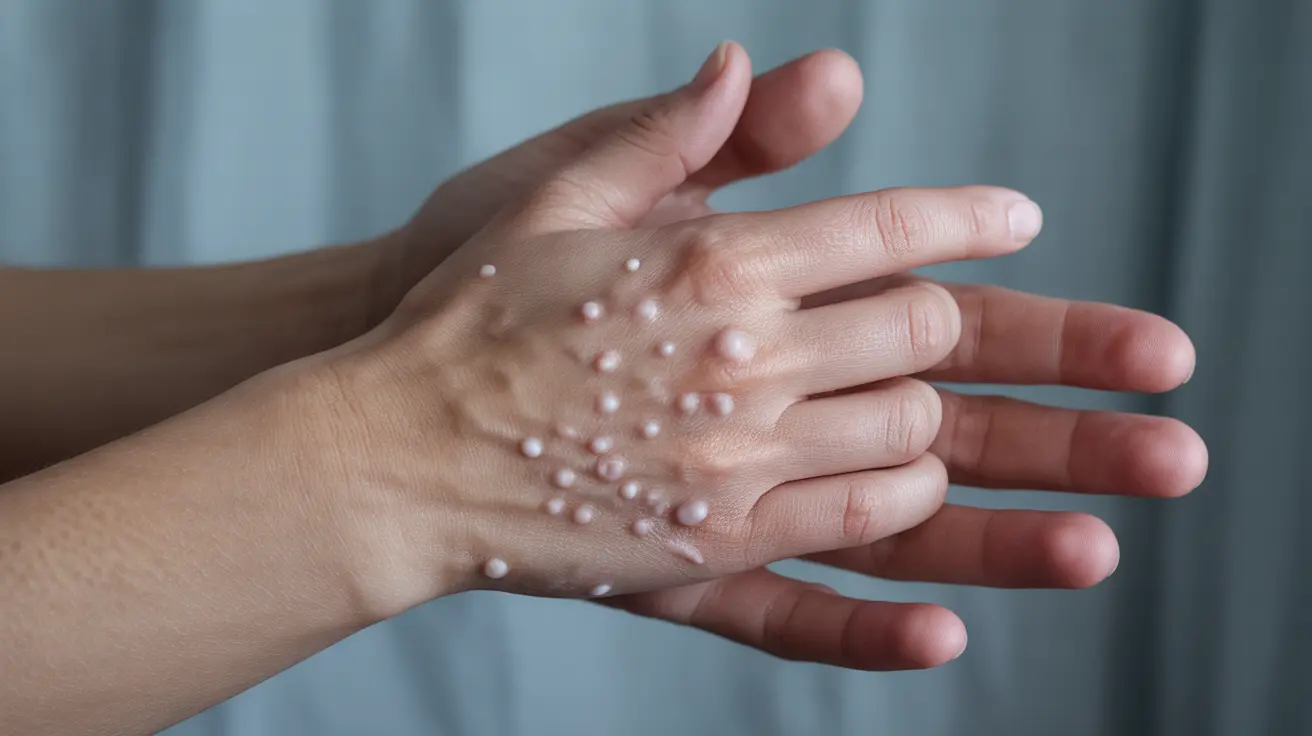When blisters appear on your fingers or hands, it's crucial to identify whether you're dealing with dyshidrotic eczema or herpetic whitlow, as these conditions require different treatment approaches. While both conditions can cause discomfort and blistering, understanding their unique characteristics helps ensure proper medical care and management.
This comprehensive guide will help you distinguish between these two conditions, explore their treatments, and know when to seek medical attention.
Key Characteristics and Symptoms
Dyshidrotic Eczema Features
Dyshidrotic eczema typically presents with the following characteristics:
- Small, fluid-filled blisters (vesicles) on fingers, palms, or feet
- Intense itching and burning sensation
- Symmetric distribution of blisters
- Tendency to appear in clusters
- Associated with dry, cracked skin when blisters heal
Herpetic Whitlow Characteristics
Herpetic whitlow shows distinct features including:
- Painful, red, and swollen finger areas
- Single or grouped fluid-filled blisters
- Usually affects one finger or specific area
- Often accompanied by burning or tingling sensation
- May have associated fever or lymph node swelling
Treatment Approaches
Managing Dyshidrotic Eczema
Treatment for dyshidrotic eczema focuses on controlling symptoms and preventing flares:
- Topical corticosteroids to reduce inflammation
- Moisturizers to prevent skin dryness
- Cold compresses for itch relief
- Phototherapy in severe cases
- Lifestyle modifications to avoid triggers
Treating Herpetic Whitlow
Herpetic whitlow requires a different treatment approach:
- Antiviral medications prescribed by healthcare providers
- Pain management through over-the-counter medications
- Keeping the affected area clean and dry
- Avoiding touching or breaking blisters
- Prevention of spread to other body parts
Prevention and Management
Preventing Dyshidrotic Eczema Flares
Several strategies can help prevent dyshidrotic eczema outbreaks:
- Identifying and avoiding trigger factors
- Maintaining good skin moisture
- Protecting hands from excessive water exposure
- Managing stress levels
- Using gentle, fragrance-free products
Preventing Herpetic Whitlow Recurrence
To prevent herpetic whitlow episodes:
- Avoid direct contact with active herpes sores
- Practice good hand hygiene
- Use protective gloves when necessary
- Take prescribed antiviral medications as directed
- Maintain a strong immune system
Frequently Asked Questions
What are the main differences in symptoms between herpetic whitlow and dyshidrotic eczema?
The key differences lie in their presentation: dyshidrotic eczema typically causes intensely itchy, clustered blisters that appear symmetrically on both hands, while herpetic whitlow presents as painful blisters usually confined to one finger or area, often accompanied by systemic symptoms like fever.
How is herpetic whitlow treated compared to dyshidrotic eczema?
Herpetic whitlow requires antiviral medications and careful wound care, while dyshidrotic eczema is treated with topical corticosteroids, moisturizers, and trigger avoidance. The treatment approaches are distinct because one is viral (herpetic whitlow) and the other is inflammatory (dyshidrotic eczema).
What common triggers cause dyshidrotic eczema flare-ups on the hands and fingers?
Common triggers include stress, seasonal allergies, excessive hand washing, exposure to metals like nickel, temperature changes, and certain foods. Identifying personal triggers is crucial for managing the condition effectively.
How can I prevent herpetic whitlow from spreading or recurring?
Prevent spread by avoiding touching the blisters, maintaining good hand hygiene, using protective barriers when necessary, and taking prescribed antiviral medications. Avoid direct contact with active herpes sores to prevent initial infection or recurrence.
When should I see a doctor if I have blisters or itching on my fingers that might be dyshidrotic eczema or herpetic whitlow?
Seek medical attention if you experience severe pain, spreading infection, fever, or if symptoms don't improve with over-the-counter treatments. Also consult a healthcare provider for proper diagnosis, as these conditions require different treatment approaches.




